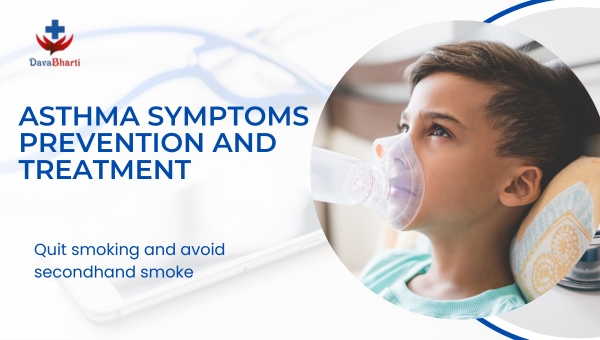Asthma Symptoms Prevention and Treatment
May 12, 2023
What is the Asthma? Symptoms, Prevention and Medication
Asthma is a chronic respiratory disease that affects the airways in the lungs. Asthma is a chronic respiratory condition that affects millions of people around the world. It can cause wheezing, shortness of breath, chest congestion and coughing. While there is no cure for asthma, it can be managed with proper treatment and lifestyle changes.
 The symptoms of asthma include:
The symptoms of asthma include:
Wheezing: A high-pitched whistling sound when breathing.
Shortness of breath: Feeling like you can't catch your breath.
Coughing: Especially at night or early in the morning.
Chest congestion: A feeling of pressure or congestion in the chest.
The causes of Asthma are not fully understoodbut it is thought to be a combination of genetic and environmental factors.
Common trigger includes:
Allergens: Such as dust mites, pet dander, and pollen.
Irritants: Such as tobacco smoke, air pollution, and strong odors.
Infections: Such as colds and the flu.
Exercise: Especially in cold, dry air.
The Top 5 Asthma Triggers and How to Avoid Them
Allergens:
Allergens are one of the most common asthma triggers. They can include dust mites, pollen, pet dander, and mold. To avoid allergens, you should keep your home clean and well-ventilated. Use dust-proof covers on your pillows and mattresses, and wash your bedding in hot water weekly. Use an air purifier with a HEPA filter to remove allergens from the air. If you have pets, keep them out of your bedroom and vacuum your home regularly.
Respiratory infections:
Respiratory infections like the flu or a cold can trigger asthma symptoms. To avoid respiratory infections, wash your hands frequently, avoid close contact with sick people, and get vaccinated against the flu every year.
Air pollution:
Air pollution can exacerbate Asthma symptoms. To avoid air pollution, avoid exercising outdoors when air quality is poor. Keep your home well-ventilated, and consider using an air purifier with a HEPA filter.
Cold air:
Cold air can trigger asthma symptoms in some people. To avoid cold air, wear a scarf over your nose and mouth when you go outside in cold weather. You can take mouth mask t Exercise indoors when it's cold outside.
Strong odors and fumes:
Strong odors and fumes can trigger Asthma symptoms. To avoid them, avoid using strong chemicals like bleach and ammonia in your home. Use natural cleaning products instead. If you need to use chemicals, make sure to use them in a well-ventilated area.

Prevention
Prevention of asthma involves identifying and avoiding triggers, as well as taking medications to control Asthma symptoms.
Treatment options include:
Inhaled bronchodilators: Medications that open up the airways.
Inhaled corticosteroids:Medications that reduce inflammation in the airways.
Leukotriene modifiers:Medications that block the action of leukotrienes, which can cause inflammation.
Immunomodulators: Medications that help to modify the immune system's response to Asthma triggers.
In conclusion, avoiding asthma triggers is an important part of managing asthma. By following the above suggested tips, you can reduce your exposure to common asthma triggers and keep yourself safe and healthy. If you have any questions about managing your asthma, speak to your doctor or pharmacist.
You can call Dava Bharti, an eCommerce healthcare platform in India. You can get 100% genuine medicine and other healthcare products of your need with free home delivery. You can consult with doctors also.
For More: What is cancer?
Recent Post

Ayurvedic Remedies To Manage High Blood Pressure

Best Ayurvedic Tips for Weight Loss

How to Store Medicines at Home Safely and Effectively

Your Ultimate Guide To A Balanced Diet For Diabetes

Ayurvedic Skincare Tips: Say Goodbye to Dry & Itchy Skin This Winter

Winter Wellness: Staying Healthy During the Cold Months

Natural Remedies for Mental Wellness Top Ayurvedic Solutions

Men’s Health Awareness: Natural Approaches to Boost Energy, Vitality, Prostate Health, and Mental Wellness

Overweight and Obesity: Causes, Impact, and Solutions

Detoxing Your Body: A Natural Path to Health and Wellness



